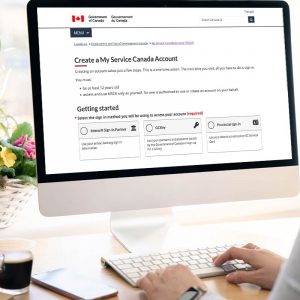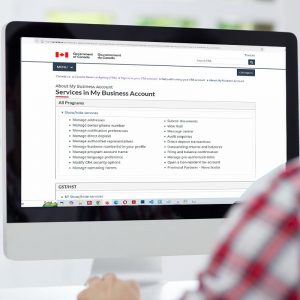Last Updated on March 13, 2025


Looking to fully understand and maximize your Old Age Security (OAS) pension benefits for a more secure retirement? You’re in the right place.
The Old Age Security (OAS) pension is a key component of Canada’s retirement income system. It’s a government-funded program that provides a monthly, taxable benefit to eligible seniors, helping to support your financial stability during retirement. To fully benefit from the OAS, it’s important to know about eligibility criteria, the application process, and the potential benefits you can receive. This article provides a comprehensive guide to OAS, detailing who can apply, how to apply, and what to expect from this essential benefit.
There’s a wealth of information to uncover, so let’s dive in and embark on your journey to a financially secure and comfortable retirement.
| QUICK LINKS | |
|---|---|
| What is the Old Age Security (OAS) Benefit? | How to Maximize Your OAS Benefits |
| How Much OAS You Could Receive? | More OAS Benefits FAQs |
Summary
- The OAS program provides a monthly, taxable income to eligible Canadian seniors, funded through general tax revenues. It aims to assist seniors in achieving financial independence during retirement, helping them cover basic living expenses.
- This guide covers essential aspects of OAS, from eligibility criteria and application steps to the various benefits offered.
What is the Old Age Security (OAS) Benefit?
The Old Age Security (OAS) program is a federal initiative that provides financial support to seniors who meet specific residency requirements. Unlike the Canada Pension Plan (CPP), which is based on contributions made during one’s working life, OAS is funded through general taxation and is available to all seniors who qualify based on age and residency.
Eligibility Criteria: Am I Qualify?
To qualify for Old Age Security (OAS) benefits, applicants must meet certain criteria that focus on age, residency, and legal status in Canada. Key requirements include:
- Residency: Applicants must have lived in Canada for a minimum of 10 years after turning 18. To receive the full OAS benefit, individuals must have resided in Canada for at least 40 years after age 18. For those who have not met the 40-year requirement, the benefit amount is prorated based on the number of years lived in Canada.
- Age: Individuals must be at least 65 years old to receive OAS benefits. In 2024, approximately 6.7 million Canadians are expected to receive OAS, reflecting the growing aging population.
- Legal Status: Applicants must be Canadian citizens or legal residents of Canada at the time of application. This requirement ensures that OAS benefits are provided to those who have established their lives in Canada.
Important Note
Make sure you have all the information ready before you start the application, as you can’t save and return to it later. Your session will expire after 20 minutes of inactivity.
Application Process: How to Apply for OAS?
Applying for Old Age Security (OAS) benefits doesn’t have to be complicated. Follow these six essential steps to ensure a smooth application process. From determining your need to apply to reviewing your application status, this guide simplifies each step, so you’re well-prepared. Let’s make the journey to securing your OAS pension straightforward and stress-free.
Step 1: Determine If You Need to Apply: Check for a letter from Service Canada about your OAS pension. If you did not receive a letter by the month after you turned 64, contact Service Canada to find out if you need to apply.
Step 2: Decide When You Want Your OAS to Start: Choose whether to start receiving your pension at age 65 or at a specific date that you choose. Understand the best time for you to start your pension.
Step 3: Submit Your Application: Apply online if you meet the criteria and have a My Service Canada Account (MSCA). If you don’t have a MSCA yet, you can register for one. Alternatively, apply by mailing a completed paper form (ISP-3550) with certified copies of required documents.
Step 4: Receive a Response From Service Canada: Expect a letter from Service Canada with either a decision on your application or a request for more information. The decision letter will include your monthly payment amount, first payment date, and any past payments owed to you.
Step 5: Review Your Application Status: Check your application status online by signing in to MSCA or by contacting Service Canada.
Step 6: If You Disagree With The Decision: If you disagree with the decision, request a review in writing within 90 days of receiving your decision letter. Service Canada staff who were not involved in the original decision will review your application.
How Much OAS You Could Receive?
The amount you could received through OAS varies based on residency duration and income level. For 2024, the maximum monthly OAS payment is approximately $615.37. However, many factors can influence this amount:
- Full OAS: Available to those who have lived in Canada for 40 years or more.
- Partial OAS: For individuals with fewer than 40 years of residency, the benefit amount will be prorated accordingly.
- Income Adjustments: OAS payments may be reduced for individuals with high income levels. For 2024, the income threshold for OAS clawback begins at $81,761, where benefits are gradually reduced based on income earned.
To give you idea how much money you could get from your OAS you can try this newly added tool Old Age Security Benefits Estimator from the government.
Did You Know…
- that you can still receive the OAS pension even if you have never worked or are currently working. The amount you receive is based on how long you have lived in Canada after the age of 18, with the maximum benefit available to those who have lived in Canada for at least 40 years.

Maximum OAS Payments and Income Thresholds
The table below shows the maximum monthly payments for Old Age Security (OAS) based on age and income. These figures apply to those eligible for full OAS benefits. If you have lived in Canada for at least 10 years but fewer than 40 years after the age of 18, you may be eligible for a partial OAS pension. In this case, contact Service Canada for specific payment details or use the Old Age Security (OAS) estimator to calculate amounts based on your income.
| Age Group | Max. Monthly Payment (Oct-Dec 2024) | Annual Net World Income in 2023* |
|---|---|---|
| 65 to 74 | $727.67 | Less than $148,451 |
| 75 and over | $800.44 | Less than $154,196 |
* – These income thresholds are based on net world income. Individuals with annual income exceeding these amounts may see their OAS benefits gradually reduced.
How to Maximize Your OAS Benefits
To ensure you receive the maximum Old Age Security (OAS) benefits available to you, there are several important steps to consider. Applying early is essential, as benefits can take time to process, and delays may lead to missed payments. Equally important is understanding how residency and income levels impact your eligibility and benefit amount. For example, maintaining accurate records of your residency, especially if you have lived outside Canada, can be crucial in confirming your qualification for a full or partial pension. Monitoring your income is also key, as higher earnings may reduce your benefit amount due to the OAS clawback.
To ensure you receive the maximum OAS benefits, consider the following tips:
Apply Promptly: Submitting your application well in advance of turning 65 is crucial, as OAS benefits can take several months to process. Apply as early as six months before your 65th birthday to minimize gaps in income.
Understand Residency Rules: Ensure that your residency history is accurately documented. Time spent living outside Canada may affect your eligibility, so keep thorough records.
Review Income Levels: Be aware of how your income affects your OAS benefits. If you anticipate higher earnings, it may be beneficial to review your financial situation with a professional to determine the impact on your benefits.
Did You Know…
- that there is an OAS clawback provision, which means that if your annual income exceeds a certain threshold, part or all of your OAS benefits may be recovered through taxes. This ensures that the program remains sustainable and that benefits are targeted to those who need them most.

More OAS Pension FAQs
In addition to the information above, the most commonly asked questions on the topic of OAS are found below.
In Conclusion
The Old Age Security (OAS) program provides essential financial support to Canadian seniors, helping them maintain a basic standard of living in retirement. By understanding the eligibility criteria, application process, and benefit amounts, seniors can take proactive steps to secure their financial future.The OAS benefit may not be the only one you qualify for. Learn about more federal government benefits on the My Service Canada Account hub.
Statistics and Information Sources:
- Government of Canada website
- Link: https://www.canada.ca/en/services/benefits/publicpensions/cpp/old-age-security.html






